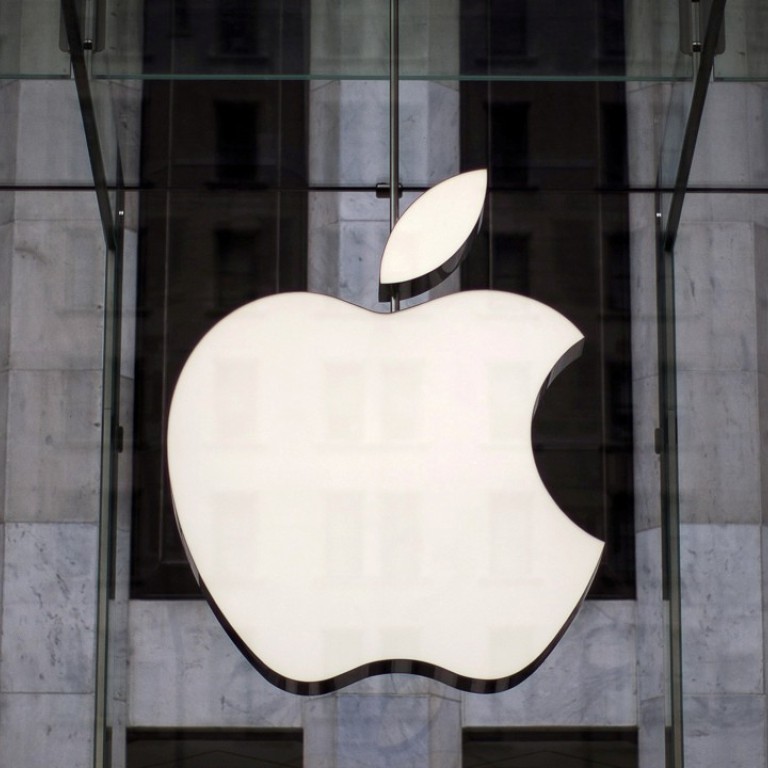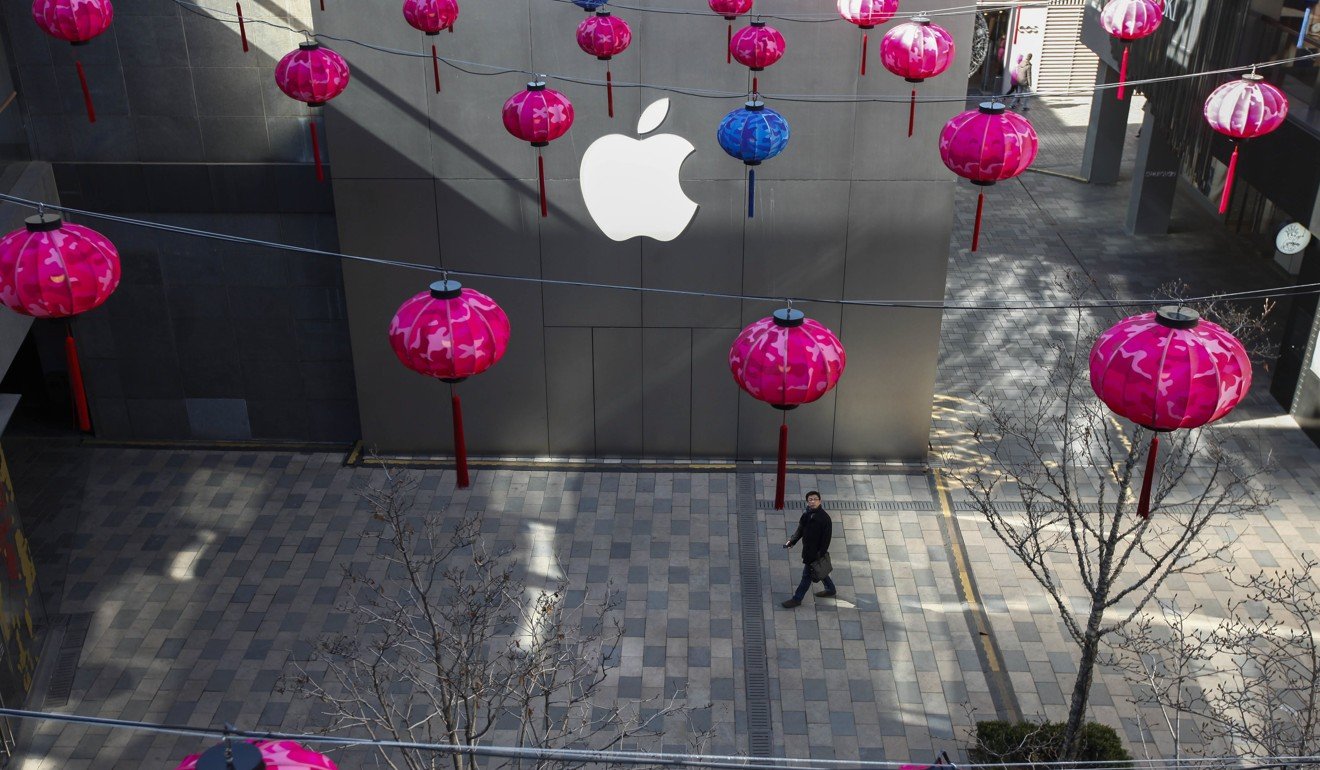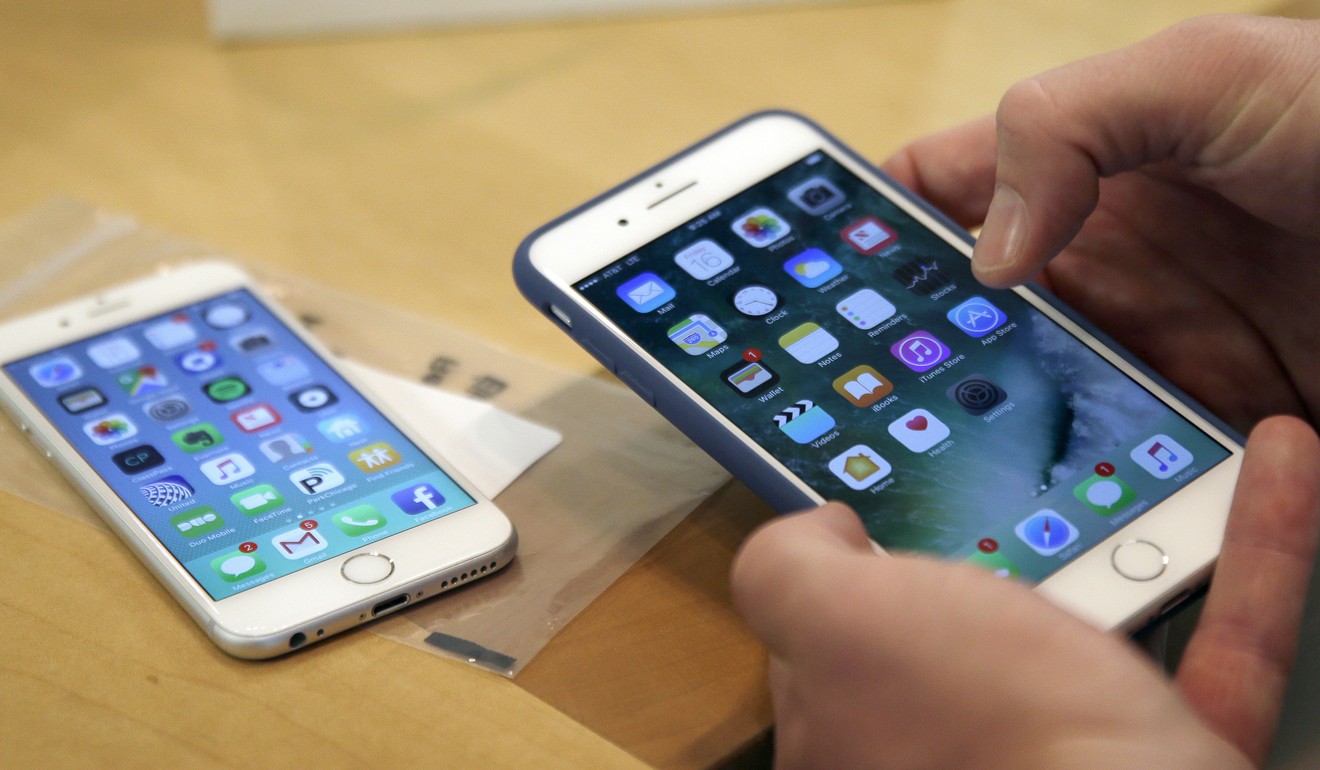
Apple shares sail to record peak on strong report, but Greater China revenues fall
Revenue from Greater China down 9.5 per cent to US$8 billion
Apple announced in its quarterly earnings report on Tuesday that it’s in good shape as it heads into the fall, when the firm is expected to release its next models of its iconic smartphone. That includes a rumoured 10th-anniversary edition of the iconic smartphone, an “iPhone 8” or “iPhone X”, with an all-new design and a price tag that could top US$1,000.
It would have taken a pretty big miss to refocus analysts’ attention on anything but the new phone. But investors seemed pleasantly surprised by the results. In the minutes after the report, shares rose sharply, up more than 5 per cent from its closing price on Tuesday of US$150.05.
The tech giant beat expectations for both revenue and profit, reporting earnings per share of US$1.67 on US$45.4 billion in revenue. Analysts had expected earnings of US$1.57 per share on US$44.9 billion in revenue. The quarter is typically the company’s weakest.
The company’s net income rose to US$8.72 billion from $7.80 billion a year earlier.
The firm also reported that it sold 41 million iPhones, up slightly from the same period last year when sales hit 40.4 million, a welcome increase, as analysts and others have noted a sales drop-off for iPhones as consumer wait for the next big thing.

Apple’s revenue from the Greater China region fell 9.5 per cent to US$8 billion in the latest quarter, as consumers switched to newer domestic offerings.
The decline was smaller than recent quarters. Apple’s chief financial officer, Luca Maestri, said mainland China revenue was flat, as were iPhone sales in the mainland. Sales of other Apple products rose in mainland China and were also up in Taiwan.
“The decline from a market standpoint was concentrated in Hong Kong, which is a place that has been really affected by a reduction in tourism because the Hong Kong Dollar is pegged to the US dollar,” Maestri said.
Reports based on leaks from Apple’s supply chain indicate that the high-end phone will have an edge-to-edge, super-sharp OLED screen and may have a fingerprint reader embedded in the glass. Other models may keep Apple’s current LCD screen. A recent leak that originated from Apple itself through its documentation for its upcoming HomePod speaker indicates that its next phones may also have wireless-charging, fast-charging and facial-recognition capabilities.
But a completely redesigned model of the iPhone may come with a downside: delays. OLED screens, in particular, are difficult to manufacture. Some worry Apple will be unable to keep up with demand for the phone.
Analysts were closely eyeing Apple’s projections for the next quarter to try to determine how the company is thinking about its short-term future. The company said it expects to make between US$49 billion and US$52 billion in its next, crucial sales quarter.
Lower guidance for revenue in the fourth quarter below $49 billion could have indicated that Apple would delay all of its models or cut the prices of the LCD phones, UBS analysts Steve Milunovich and Benjamin Wilson said in an investor’s note ahead of the report.
Experts say Apple’s future depends a lot on this next generation of iPhones, as the smartphone industry faces slower growth and higher competition. Sales of the iPhone have been somewhat disappointing for several quarters, as consumers save their dollars for the new, redesigned model.
“Investor focus over the next two quarters should be on the iPhone 8 cycle,” KeyBanc Capital Markets analysts said in a note to investors earlier this month.
In a survey of potential iPhone buyers, analysts at UBS found the greatest level of interest was focused in the high-end model, noting that respondents were more interested in the “iPhone 8” than they have been in Apple’s last two iPhone generations.
If it takes Apple too long to get its phones to customers, it could hurt its performance in the all-important holiday season.

Apple’s chief rival, Samsung, just reported record-breaking profits despite a tough year when it suffered the recall of its Note 7 smartphone. Much of Samsung’s success comes from its business selling smartphone components to other manufacturers, including Apple.
Plus, Samsung is already generating good buzz about its upcoming Note 8, due to debut later this month.
Any disruption of iPhone sales could be damaging to Apple, which has counted on strong smartphone sales to weather problems in the past.
Now the company faces slowing demand, including in China, the world’s largest smartphone market. Some analysts have pointed to China’s market as a possible reason Apple capitulated to Chinese government demands earlier this week to stop distributing apps that iPhone users downloaded to avoid government censorship.
The app store and other Apple services, such as Apple Music, have become an increasingly important part of the company’s business as it looks for ways to keep users happier with their devices for longer. Services, the second-largest segment for Apple, make up 16 per cent of revenue. But the lion’s share of the company’s money is still tied to the iPhone, which accounts for nearly 55 per cent of its sales revenue.


